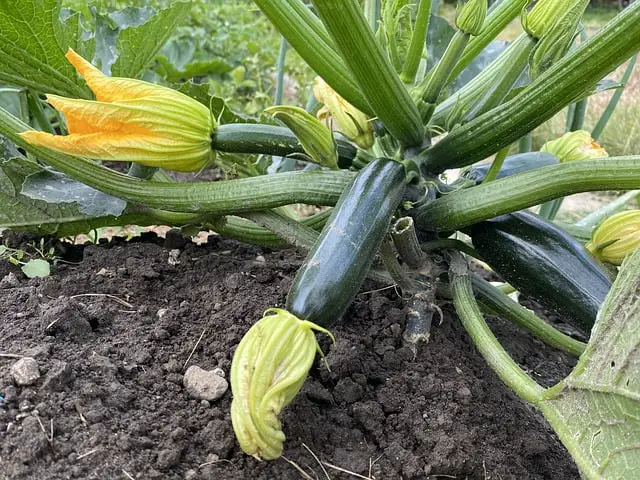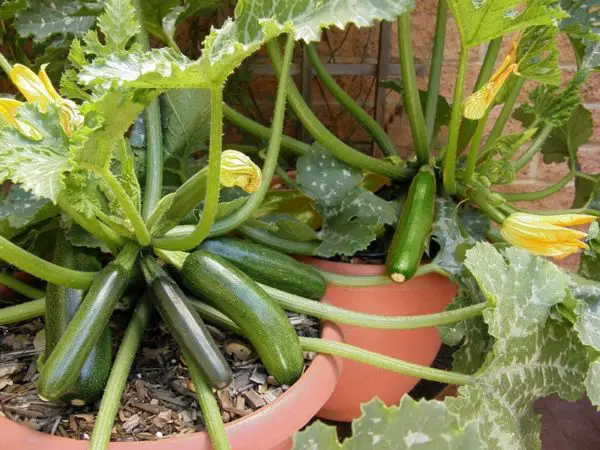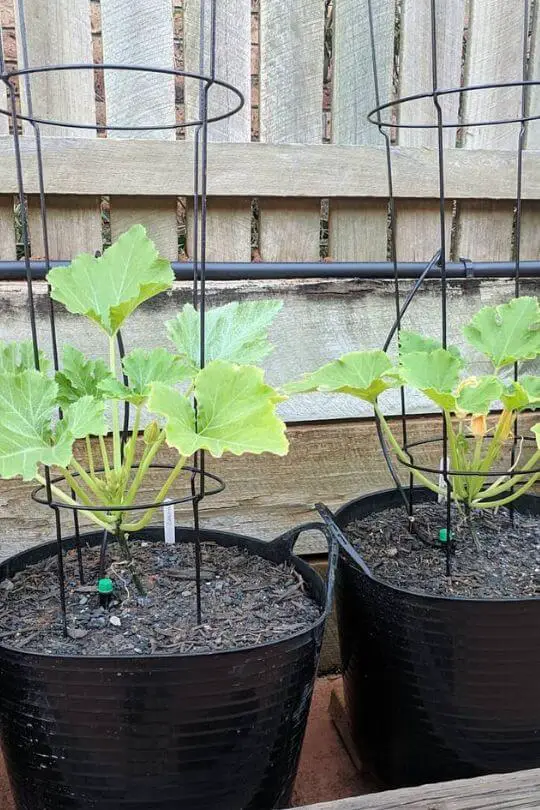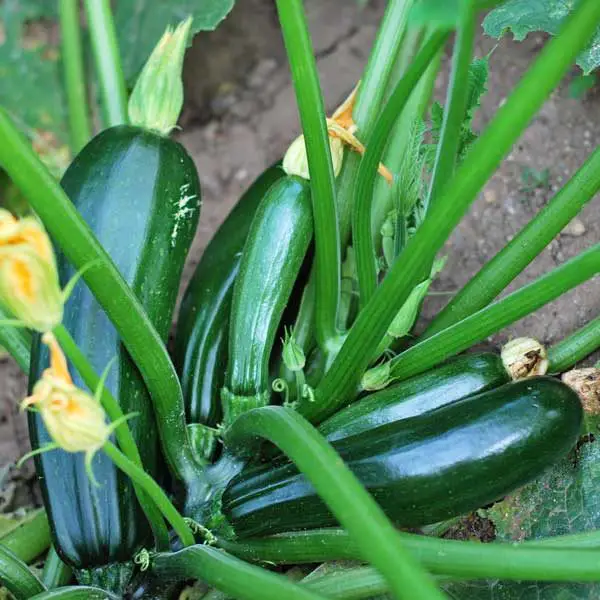So you’ve decided to grow your own zucchini and are excited to start planting, but now you’re faced with the perplexing question of how many zucchini plants per pot is optimal? Fear not, dear gardener, for determining the right number of zucchini plants per pot is simpler than you may think. In this article, we will explore some handy tips and tricks to help you figure out the ideal number of zucchini plants to maximize your pot’s space and ensure a bountiful harvest. From considering the pot size to understanding the plant’s growth habit, we’ve got you covered on your zucchini planting journey!
Factors to consider
When it comes to growing zucchini in pots, there are several factors that you need to take into consideration to ensure a successful and bountiful harvest. These factors include pot size, zucchini variety, plant spacing, and growing conditions. By understanding and optimizing these factors, you can create an ideal environment for your zucchini plants to thrive.
Pot size
The size of the pot plays a crucial role in the growth and productivity of your zucchini plants. It determines the amount of space available for the roots to spread and develop, as well as the availability of nutrients and water. Choosing the right pot size is essential for the overall health and productivity of your zucchini plants.
Zucchini variety
Different varieties of zucchini have varying characteristics, including growth habits, plant size, and fruit production. When selecting a zucchini variety for container gardening, it’s important to consider the space limitations and desired yield. Some zucchini varieties are more suited for compact spaces, while others are better suited for larger pots.
Plant spacing
Proper plant spacing is critical to the success of your zucchini plants. Inadequate spacing can lead to overcrowding, poor air circulation, and increased risk of diseases. On the other hand, too much space between plants can result in wasted space and decreased productivity. Understanding the ideal spacing requirements for your zucchini plants is essential to ensure optimal growth and yield.
Growing conditions
Zucchini plants have certain environmental requirements for optimal growth and productivity. Factors such as sunlight, temperature, humidity, and nutrient availability can greatly influence the health and vigor of your plants. Creating a favorable growing environment by providing the right conditions for your zucchini plants is essential for their overall success.
Determining pot size
The pot size for your zucchini plants is a key consideration that directly impacts their growth and productivity. By choosing the right pot size, you can provide adequate space for the roots to grow, ensuring nutrient and water uptake, as well as supporting the overall health of your plants.
Consider mature plant size
Before selecting a pot size, it’s important to consider the mature size of your zucchini plants. Zucchini plants can vary in size depending on the variety and growing conditions. Determining the expected size of your zucchini plants will give you an idea of the pot size needed to accommodate their root system and support their growth.
Assess the root system
Zucchini plants have a vigorous and extensive root system that requires sufficient space to grow and expand. Assessing the root system of your plants before transplanting them into pots is crucial in determining the appropriate pot size. If the roots are densely packed or circling around themselves, it may indicate that the plant has outgrown its current container and requires a larger pot for optimal growth.

Choosing the right zucchini variety
When selecting zucchini varieties for container gardening, it’s important to choose ones that are well-suited for growing in confined spaces. There are two main types of zucchini varieties to consider: bush zucchini and vining zucchini.
Bush zucchini
Bush zucchini varieties are compact and have a more upright growth habit. They tend to take up less space compared to vining varieties, making them ideal for smaller pots and limited growing areas. Bush zucchini plants are also known for their high productivity, producing an abundance of fruits in a more confined space.
Vining zucchini
Vining zucchini varieties, as the name suggests, have a sprawling growth habit and require more space to grow and spread. These varieties are better suited for larger pots and have the advantage of producing larger yields overall. However, they require adequate support, such as trellises or stakes, to ensure that their vines are properly trained and don’t overwhelm the container.
Understanding plant spacing
Proper plant spacing is crucial for the healthy growth and productivity of your zucchini plants. The spacing between plants directly affects air circulation, prevents overcrowding, and reduces the risk of diseases. It also ensures that each plant receives sufficient light, water, and nutrients.
Distance between plants
When growing zucchini in pots, it’s important to provide each plant with adequate space to spread and grow. For bush zucchini varieties, a spacing of about 12 to 18 inches between plants is generally recommended. This allows for proper ventilation and room for the plants to develop without competing for resources. Vining zucchini varieties typically require more space, with a spacing of about 24 to 36 inches between plants.
Vertical or horizontal training
In addition to proper spacing between plants, you can also consider training your zucchini plants vertically or horizontally. Vertical training involves using a trellis or stakes to support the plants and guide their growth upwards. This can help save space and prevent the vines from sprawling across the ground. Horizontal training involves allowing the plants to trail along the ground or on a support system. This method requires more space but can allow for more vigorous growth and larger yields.

Factors influencing zucchini growth
Several factors can influence the growth and productivity of your zucchini plants. Understanding these factors and providing the optimal conditions can contribute to healthy plants and a bountiful harvest.
Sunlight requirements
Zucchini plants thrive in full sun, requiring at least six to eight hours of direct sunlight daily. Adequate sunlight is crucial for photosynthesis, which is essential for the production of energy and the growth of your plants. When positioning your pots, make sure they receive enough sunlight to support the growth and fruiting of your zucchini plants.
Temperature
Temperature plays a significant role in the growth and development of zucchini plants. They prefer warm temperatures between 70 and 90 degrees Fahrenheit. Cool temperatures below 60 degrees Fahrenheit can stunt growth and reduce fruit production. It’s important to provide a suitable temperature range for your zucchini plants to ensure optimal growth and productivity.
Humidity
Zucchini plants prefer moderate humidity levels for optimal growth. High humidity can increase the risk of diseases, such as powdery mildew, while low humidity can lead to water stress and hinder growth. Maintaining moderate humidity levels, around 50 to 70%, can create a favorable environment for your zucchini plants.
Nutrient availability
Proper nutrient availability is essential for the overall health and productivity of your zucchini plants. Zucchini plants require a balanced supply of essential nutrients, including nitrogen, phosphorus, and potassium. Using a reputable potting mix enriched with organic matter or adding organic fertilizers can help ensure that your plants have access to the necessary nutrients for their growth.
Dwarf zucchini varieties
If you have limited space for container gardening, consider growing dwarf zucchini varieties. These compact plants are specifically bred to grow well in confined spaces, making them ideal for smaller pots and balconies.
Ideal for limited space
Dwarf zucchini varieties are perfect for urban gardeners or those who have limited space for gardening. They have a more compact growth habit, taking up less space while still producing a satisfactory yield. These varieties are a great option for those with small gardens, patios, or balconies, allowing you to enjoy homegrown zucchini even in limited spaces.
Multiple plants in a pot
Since dwarf zucchini varieties take up less space, you can plant multiple plants in a single pot to maximize your yield. This is particularly useful if you have limited pots or want to grow a variety of zucchini plants in a smaller space. Just ensure that each plant has sufficient room for its roots to grow and that they are compatible in terms of growth rate and watering needs.

Pot size recommendations
The size of the pot directly affects the growth and productivity of your zucchini plants. Here are some pot size recommendations based on the variety and expected plant size:
12-inch pot
A 12-inch pot is suitable for growing compact bush zucchini varieties or dwarf zucchini plants. It provides sufficient space for roots to develop and support the growth and fruit production of these smaller plants. Growing a single bush zucchini plant or multiple dwarf zucchini plants in a 12-inch pot can yield a decent harvest.
16-inch pot
For vining zucchini varieties or larger bush zucchini plants, a 16-inch pot is recommended. This larger pot size provides more room for the roots to spread and allows for better nutrient and water uptake. It can support the growth and fruit production of these plants more effectively.
20-inch pot or larger
If you have the space available and want to maximize the yield of your zucchini plants, consider using a 20-inch pot or larger. These larger pots provide ample space for the extensive root system of vining zucchini varieties and larger bush zucchini plants. Growing your zucchini in a larger pot ensures that your plants have enough room to grow, resulting in healthier and more productive plants.
Planting techniques
Before you can enjoy the delicious taste of homegrown zucchinis, you need to get your plants off to a good start. There are two main planting techniques to consider: starting with seeds or transplanting seedlings.
Starting with seeds
Starting your zucchini plants from seeds gives you more control over their development and allows you to select the desired varieties. You can sow the seeds directly into the pots or seed trays, ensuring they are planted at the recommended depth. Keep the soil consistently moist and provide sufficient warmth and sunlight for germination. Once the seedlings have developed a few sets of true leaves, you can transplant them into their final pots, ensuring proper spacing and adequate pot size.
Transplanting seedlings
If you prefer a head start or want to save time, you can purchase zucchini seedlings from nurseries or start your own seeds indoors. Transplanting seedlings allows you to skip the initial germination phase and directly focus on growing and caring for the young plants. When transplanting, ensure that the seedlings are well-established with a strong root system. Gently loosen the roots and plant them at the recommended depth in the selected pot. Remember to follow the spacing recommendations and choose an appropriate pot size based on the mature size of your zucchini plants.

Zucchini plant care
To ensure the health and productivity of your zucchini plants, proper care and maintenance are essential. Here are some key aspects of zucchini plant care to keep in mind:
Watering
Consistent watering is crucial for the growth and development of your zucchini plants. Keep the soil evenly moist, but avoid overwatering, as it can lead to root rot and other diseases. Monitor the soil moisture regularly and adjust the watering schedule based on the environmental conditions and the specific needs of your plants.
Fertilization
Zucchini plants are heavy feeders and require regular fertilization to ensure optimal growth and fruit production. Using a balanced organic fertilizer or a slow-release granular fertilizer can help supply the necessary nutrients to your plants. Follow the manufacturer’s instructions for application rates and frequencies, and adjust fertilization based on the growth and health of your zucchini plants.
Pruning
Pruning zucchini plants can help promote better airflow, reduce disease risks, and improve overall plant health. Remove any damaged or diseased leaves or stems promptly to prevent the spread of diseases. You can also pinch off the growing tips of the plants to encourage bushier growth, particularly for vining varieties. Regularly inspect your plants for any signs of pests or disease and take appropriate action to prevent further damage.
Pest and disease control
Zucchini plants can be susceptible to various pests and diseases, including aphids, squash bugs, powdery mildew, and bacterial wilt. Monitor your plants regularly for any signs of pests or diseases, such as yellowing leaves, distorted growth, or wilting. Implement integrated pest management techniques, such as handpicking pests, using insecticidal soap, or applying organic pest control methods, to prevent and control pest infestations. Proper plant spacing, good air circulation, and maintaining adequate humidity levels can help reduce the risk of diseases such as powdery mildew.
Harvesting and maintaining production
As your zucchini plants mature, you’ll eventually be rewarded with delicious and nutritious zucchinis. Knowing when and how to harvest your zucchinis is crucial to maintain a continuous yield.
Proper harvesting techniques
To harvest your zucchinis, use a sharp knife or garden shears to cut the fruit from the plant, leaving a small portion of the stem attached. Avoid twisting or yanking the zucchinis off the plant, as this can damage the plant or cause it to produce fewer fruits. Harvest zucchinis when they reach their desired size, typically at around 6 to 8 inches in length, depending on the variety. Regularly harvest zucchinis, even if you don’t plan to consume them immediately, as leaving them on the plant can inhibit further fruit production.
Encouraging continuous yield
To maintain a continuous yield of zucchinis throughout the growing season, it’s important to encourage your plants to keep producing. Regularly remove any mature or overripe fruits from the plant to prevent them from inhibiting the growth of new fruits. Consistent watering, fertilization, and pest control are also vital for maintaining the health and productivity of your zucchini plants. With proper care and attention, your zucchini plants can continue to produce a bountiful harvest all season long.
In conclusion, growing zucchini in pots can be a rewarding and enjoyable gardening experience. By considering factors such as pot size, zucchini variety, plant spacing, and growing conditions, you can create an ideal environment for your zucchini plants to thrive. With the right care and attention, you’ll soon be able to enjoy a plentiful harvest of delicious zucchinis, even in limited space. Happy gardening!

